Dealer Template
What is Waterless® Geothermal?
Waterless® direct exchange (dx) geothermal allows you to directly exchange thermal energy with the earth to heat or cool your home.
The Waterless® DX geothermal system moves heat energy to and from the earth through a closed loop of environmentally-friendly refrigerant. The system uses buried copper tubing to exchange heat energy to and from the ground delivering hot or cool air into your home. Refrigerant circulates through the ground loops and the indoor heat exchanger while the indoor air handler pushes the conditioned air through the home.
At the center of it all is the heat pump, installed inside or outside the home, which works to move refrigerant through the ground loops and throughout the heating and cooling distribution system.
By using the direct exchange method, you’re able to reduce the number of heat transfers, which directly increases your home’s heat output. In a traditional ground source geothermal design there is a total of three heat transfers, while in a DX geothermal system there are only two.
Parts of a Geothermal System
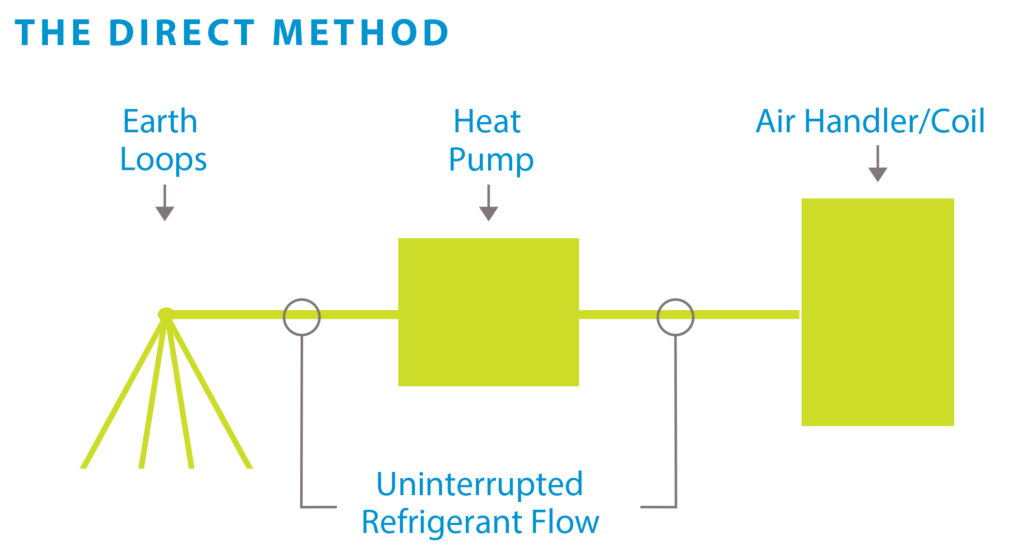
When comparing heating and cooling systems, it’s clear that the Waterless® DX Geothermal system could save you the most.
Use our savings calculator to find out how much you could personally save. A DX geothermal system is capable of heating and cooling a 2,100 square foot home for as little as a dollar a day! Imagine that, heating or cooling your home for less than the price of a coffeehouse cup of coffee. That means your yearly heating and cooling bill could be as little as $365.* In addition, you can also get free hot water through your Waterless® DX Geothermal unit for even more savings.
*The cost of operation may vary based on your geographic location and the cost of electricity.

Simple. Efficient. Effective. Waterless® DX Geothermal performs to high standards
Thousands of people have begun to recognize and enjoy the simplicity, savings, and comfort of a Waterless® DX geothermal design, which has repeatedly proven to be a more efficient heat pump design.
A Waterless® DX geothermal system has the ability to heat and cool a 2,100 square foot home for as little as $30 a month! Save a substantial amount of money with a energy-efficient, environmentally-friendly renewable energy source.
With DX Geothermal technology dating back to 1945 when the first closed loop geothermal design was installed, you can be confident that a Waterless® DX geothermal system will be a safe investment and perform up to your expectations.
How Direct Exchange Geothermal Works
A Direct Exchange Geothermal Works by transferring heat to and from the ground to deliver heating or cooling into your home.
The earth absorbs solar energy from the sun allowing the ground to remain at a nearly constant temperature, between 50 to 70 degrees Fahrenheit year around depending on your geographic location. A DX geothermal system utilizes these constant temperatures to exchange heat between your home and the earth as needed for heating and cooling.
By using the direct exchange method, you’re able to reduce the number of heat transfers, which directly increases your home’s heat output. In a traditional ground source geothermal designs there are a total of three heat transfers, while in a DX geothermal system there are only two.
Types of Loops

Diagonal
A diagonal ground loop configuration is drilled at a uniform angle between 70 to 100 feet into the ground using a small drilling rig and uses between 4 to 12 loops per system. This type of configuration allows the installer to dig a three foot diameter hole at the surface. Because it only requires a small amount of space and a trench that leads to the home, less of your yard will be dug up. This results in superior efficiency even when space is limited.
The three foot hole combined with the diagonal design enables an installer to maintain proper distance between loops for proper heat transfer, while digging up less area in your yard.
Directional Bore
Sometimes referred to as a vertical bore and other times referred to as a horizontal bore; a directional bore loop configuration is really a hybrid between both a vertical and a horizontal ground loop. The loop length will typically extend out approximately 75-125 feet in several directions, while being buried anywhere between 10 to 15 feet deep. Although this design requires a larger area of land, it also can be installed with minimal digging to your yard. Using anywhere between 4 to 12 loops per system, the loops are appropriately spaced apart. Which allows them to transfer a good amount of heat from 15 feet below the surface of the earth. The loops are pushed into the ground and fan out into a hand shaped pattern returning back to the house at one location.


Horizontal
A horizontal loop configuration takes up the most amount of land but allows you to dig multiple trenches on your property which eliminates the need to use grout, and can save on your installation costs when yard space is not an issue. A typical system requires 4 to 12 loops to be installed depending on the size of the system and square footage of your home.
Vertical
A vertical loop configuration is dug using a drilling rig to bore 100 feet into the ground. The vertical loops are placed up and down (vertically). Using 3 to 6 loops per system, they are placed at an appropriate distance apart which allow them to transfer heat appropriately. This requires less space than horizontal loops and achieves greater efficiency when yard space is limited.

Benefits
Cost Savings

Waterless® DX Geothermal Systems offer 100% heating and cooling capacities through a simpler heat exchange process. This results in less heat changes, using less electricity, and significantly more savings over traditional heat pump designs.
Free Hot Water

If you choose to select the optional hot water generator, the system can produce free hot water at the same time it is heating or cooling your home. Depending on which hot water option you chose the system is capable of providing 50%-100% of your hot water needs for your home or business.
Quiet & Reliable

Waterless® DX Geothermal units are fully enclosed and protected from outdoor elements. With no outdoor fan, and an insulated enclosed cabinet. Units can be installed indoors in a utility room, garage, or basement, and operate with little to no noise.
Less Parts
Waterless® DX Geothermal technology was created with simplicity in mind. The system itself is created with less parts than any other system on the market. It heats and cools your home without using any water related pumps or parts. The systems simplicity and reliability can mean a longer life of the unit and potentially less maintenance costs.
Quality

Proudly made in the USA, Waterless® Geothermal is dedicated to designing reliable and efficient products for its customers. Each system is manufactured with a focus on quality design and craftsmanship.
Ultimate Comfort & Humidity Control

DX geothermal systems are some of the most comfortable options on the market, with the unrivaled humidity removal process. A Waterless® DX Geothermal system will take a large volume of humidity out of your home contributing to a healthier lifestyle and improved indoor air quality for you, your family, and your belongings.
Decreased Environmental Footprint
You can reduce your need for natural gas or oil and other forms of fossil fuel resources. This saves thousands of pounds of greenhouse gas emissions every year and will decrease the carbon footprint associated with your home. The U.S. Department of Energy states that ground source heat pumps reduce consumption and corresponding emissions up to 75 percent and have the lowest environmental impact of all heating systems.
Increased Property Value

More and more people are recognizing green building practices. Not only are they able to save you energy and lower utility bills but they are gentle to the environment while increasing the value of your home. As homeowners are recognizing these benefits, they are seeking out homes and businesses that offer sustainable energy systems like geothermal systems.
Minimally Invasive Installation Options
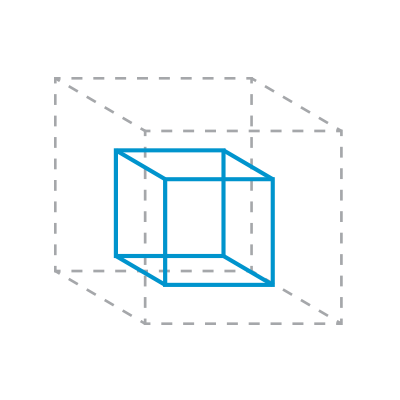
A Waterless® DX Geothermal system requires minimal yard space and can be adapted to both new and existing homes of any property size. Thanks to a variety of loop designs, including a diagonal loop that fits within a 3-foot diameter circle, these systems offer the flexibility to be installed almost anywhere, even in urban settings. Additionally, the outdoor heat exchanger is underground, ensuring nothing is visible above ground on your property.
Rebates & Tax Credits

You can take advantage of many federal, state, and local incentives and rebates by installing Waterless® Geothermal in your home. Click here to learn more about available incentives, or visit dsireusa.org.
Big Savings
Because of the environmental benefits of geothermal, there are many tax credits and rebates available to homeowners.
In addition to tax credits, investing in a geothermal system offers significant financial benefits. By drastically reducing your heating and cooling bills, the initial cost of the system can be fully recouped within a few years. This payback is a result of the system’s high efficiency and the sustainable energy it utilizes, making geothermal not only an environmentally friendly option but also an economically wise choice that continues to save you money long after the installation is complete.

Customer Cost of Operations
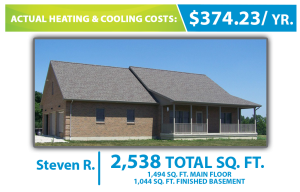
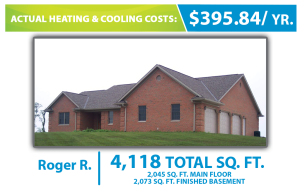
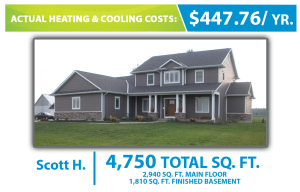
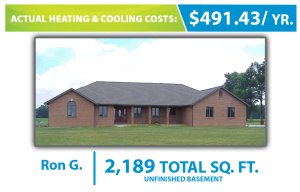
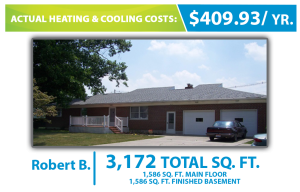
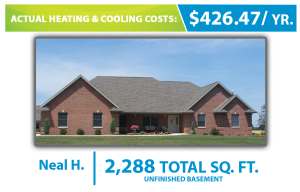
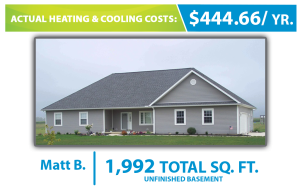
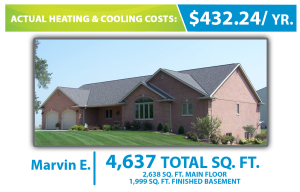
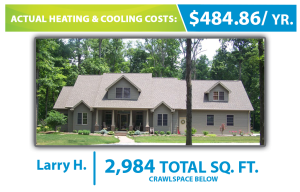
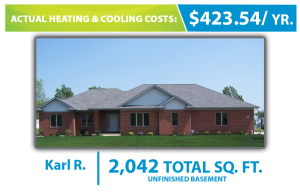
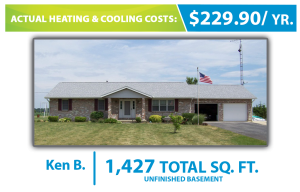
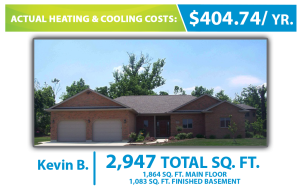
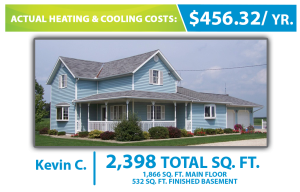
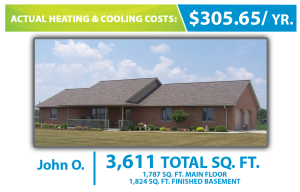
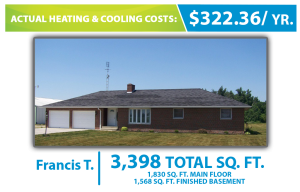
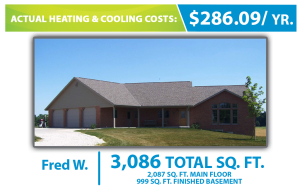
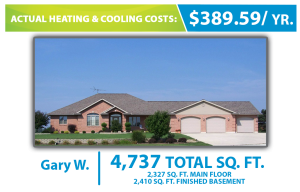
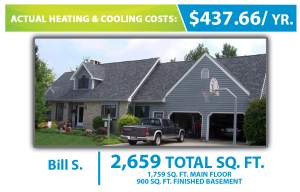
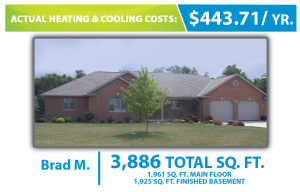
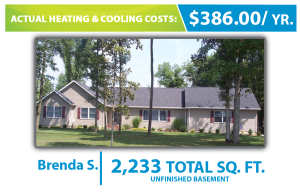
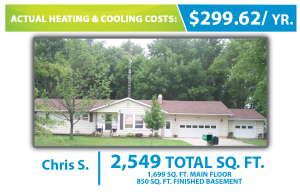
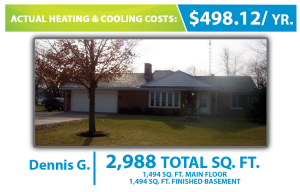
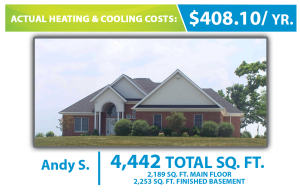
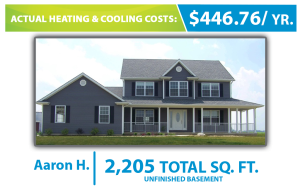
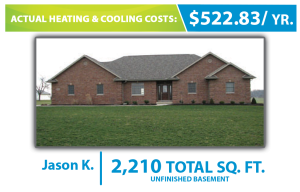
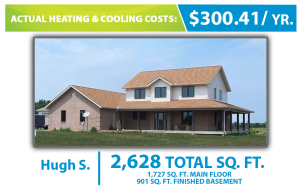
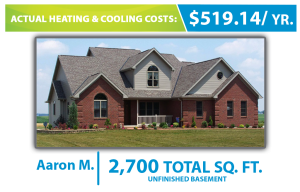
The Installation Process
1. Home Evaluation
Our experts begin with a thorough assessment of your property to determine the best geothermal solution tailored to your home’s specific needs and environmental conditions.

2. System Design
We design a customized geothermal system that optimizes efficiency and performance, ensuring that all components are perfectly suited to your home’s heating and cooling requirements.

3. Installation
Our factory-trained installers efficiently install your geothermal system. This may include digging holes for the loops, trenches, backfilling, ductwork configuration, installing & starting up the system.
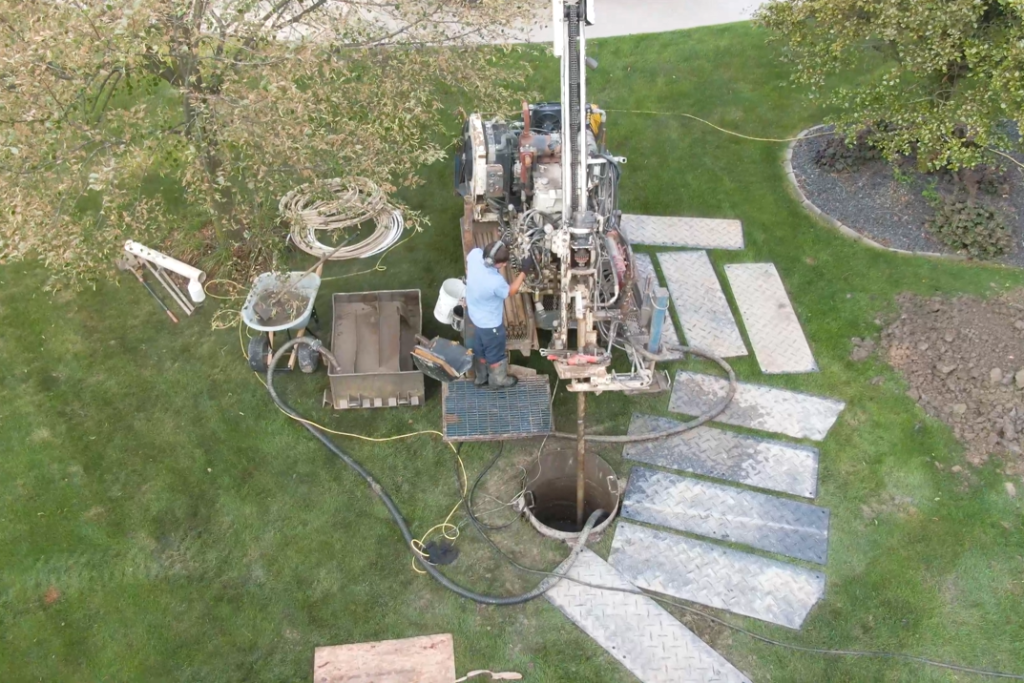
4. Comfort and Savings!
Enjoy the comfort of consistent, eco-friendly heating and cooling while reducing your energy bills. Our geothermal systems deliver remarkable savings and superior climate control year-round.

Frequently Asked Questions
Copper has a natural heat transfer advantage over plastic. As a highly conductive material, copper is one of the best methods of transferring heat making a much more efficient ground loop heat exchanger. Copper’s thermal conductivity (k) rate is more than 600 times greater than plastic, it’s this capability that allows copper to maximize the earth’s heat for your home. As a result, smaller diameter earth loops with smaller boreholes can be less expensive to drill compared to plastic pipe alternatives.
No, A water-source geothermal system is designed to pump water through the plastic ground loop, whereas a direct exchange DX geothermal unit, it pumps refrigerant through copper tubing. A copper loop cannot connect to a water-source unit, and a plastic loop cannot connect to a direct exchange unit.
Yes! The functionality and versatility of a DX geo system allows the system to both heat and cool your home efficiently. Your indoor thermostat can easily switch the geothermal system from the heating mode or to the cooling mode.
Yes! Waterless™ direct exchange geothermal uses an EPA approved, environmentally friendly refrigerant, used in both a Direct Exchange geothermal (DX) and water source geothermal systems.
Even the EPA confirmed the safety of refrigerant in its statement about a DX geothermal system when it stated, “Refrigerant is a non toxic, inert gas, posing no direct health threat to humans–nor to ground water–and it can be used with confidence in underground heat exchangers as a part of a DX System.”
Hot water production is one of the optional benefits a direct exchange (DX) geothermal system can provide! A hot water heat exchanger can be built into a system to generate domestic hot water or hot water generation. Option #1 (the desuperheater) partially generates hot water and can supplement your hot water specifically designed to generate 100% of your domestic hot water needs. Studies done by the U.S. Department of Energy show that a geothermal system that provides heating, cooling, and 100% domestic hot water will provide the most energy savings and can reduce your homes overall utility cost more than any other heat pump design.
A hot water desuperheater will generally provide 120°F water and can supply most of the domestic water needs depending on the amount of consumption. The cost of water through the use of a desuperheater is pennies a day or can even be free.
A Waterless® geothermal compressor unit can be installed indoors or outdoors, while the air handler is always installed indoors.
The system has a very quiet operation, and provides a pleasant environment inside the home.
Yes! This is because it works with nature. This means no pollutants are added to the air. A geothermal simply moves a majority of the thermal energy needed to condition your home, to and from the earth, and has to generate very little energy that doesn’t already exist.
Installing a Waterless geothermal is equivalent to planting 750 trees or permanently removing 2 cars off the road.
As green building practices gain attention because of their ability to offer energy saving and lower utility bills, updated guidelines provide real estate appraisers with a method of documenting energy efficient upgrades, including geothermal energy. This allows them to better evaluate the values of green homes.
Both home appraisers and real-estate agents are educated and acknowledge a geothermal system as a renewable energy source with greater value. The EPA has stated that geothermal systems can increase the value of a home $20 for every dollar saved in heating costs per year. Allowing your home to be much more appealing for resell.
Yes, if the current system has ductwork then most likely the ductwork will be adequate for the new system (assuming it was designed properly to begin with). However, some duct modification may be necessary to achieve the maximum level of comfort. The ductwork should be evaluated by an HVAC professional during the initial home assessment. The contractor can determine the requirements and modifications necessary to accommodate the new system.
Some form of maintenance is required for all HVAC systems. Forced air systems with ductwork require the air filters to be changed on a regular basis, and for hydronic systems (that don’t have ductwork), it is recommended to test the pH of the water to ensure the water remains alkaline. It is also recommended to have a professional do a check on the entire system from time to time as well to ensure the system is running in normal operating conditions.
Geothermal ground loops can last as long as 50 plus years, including copper loops. It is one of the most stable metals and is non-corrosive in most soil conditions. With the proper measures in place, the longevity of copper can last for many generations. Each Waterless® geothermal system comes equipped with an Earth Loop Protection system to ensure a long life and integrity of the copper loop. This protection system is designed to protect the copper ground loop for a period of 75+ years if installed in an adverse soil condition. This same cathodic protection technology has been used for over 100 years, and is used to protect the underground gas pipelines from corrosion that run across America. The Waterless® Earth Loop Protection system can do the same for you and your copper ground loop.
No. Copper loops have no adverse effect on grass, trees, or shrubs. Initially there will be bare areas in the yard from drilling the small diameter boreholes, and a 2 foot wide trench leading back to the house, but these bare spots can easily be restored by planting new grass seed over those areas. The diagonal loop design requires less space to be dug up than any other design. The ground loops for a diagonal design can be installed inside a 3 foot diameter circle in the yard, resulting in less mess and less area being tore up.
This geothermal technology is the same as the first and original closed-loop geothermal technology ever installed back in 1945 by Dr. Robert C Webber. in 2018, Earthlinked, the longest standing (38 years) Direct Exchange geothermal manufacturer in the world combined forces with us to continue delivering this unique geothermal technology to the world.
